Wolfram Function Repository
Instant-use add-on functions for the Wolfram Language
Function Repository Resource:
Import astronomical light curve data from the AAVSO International Database
ResourceFunction["AAVSOLightCurveData"][object] queries AAVSO International Database and returns the light curve data for the given astronomical object. | |
ResourceFunction["AAVSOLightCurveData"][object,params] returns the light curve data for the given object and query parameters. | |
ResourceFunction["AAVSOLightCurveData"][…,form] returns data in the specified format form. |
| "DateRange" | All | temporal range of the data queried |
| "Filters" | All | observation filters to include |
| "ObserversCode" | All | observers to include by code |
| "ReducedData" | True | whether to get the symplified data fields or all the fields |
| "RawData" | a list of lists containing the column names in the first list and the data in the remaining lists |
| "Association" | a nested association with dates as keys on the first level and properties as keys on the second level |
| "Dataset" | a dataset with named columns where each row is an observation (Default) |
| "TemporalData" | temporal data where each path corresponds with a filter |
Query the magnitude of Betelgeuse during the first three days of 2023:
| In[1]:= | ![ResourceFunction["AAVSOLightCurveData"][
Entity["Star", "Betelgeuse"], <|
"DateRange" -> {DateObject[{2023, 1, 1}, "Day"], DateObject[{2023, 1, 3}, "Day"]}|>]](https://www.wolframcloud.com/obj/resourcesystem/images/b87/b8794080-dabc-45d2-a786-371c221e6621/472bf515b90306b5.png) |
| Out[1]= | 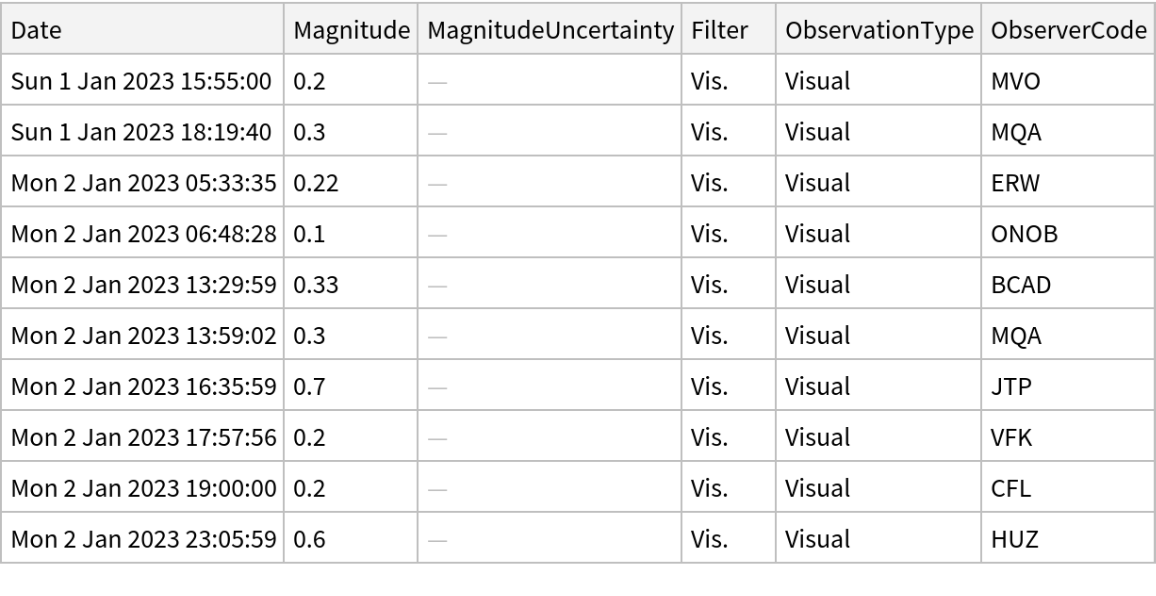 |
Get data about the magnitude of Mira star in the last 3 months in the Johnson V band:
| In[2]:= |
| Out[2]= |  |
Get complete information about observations of Betelgeuse during the first three days of 2023 and display it as raw data:
| In[3]:= | ![ResourceFunction[
"AAVSOLightCurveData"]["Betelgeuse", <|
"DateRange" -> {DateObject[{2023, 1, 1}, "Day"], DateObject[{2023, 1, 3}, "Day"]}, "ReducedData" -> False|>]](https://www.wolframcloud.com/obj/resourcesystem/images/b87/b8794080-dabc-45d2-a786-371c221e6621/57411dce012aa6bf.png) |
| Out[3]= |  |
Get the object data about Mira star:
| In[4]:= |
| Out[4]= | 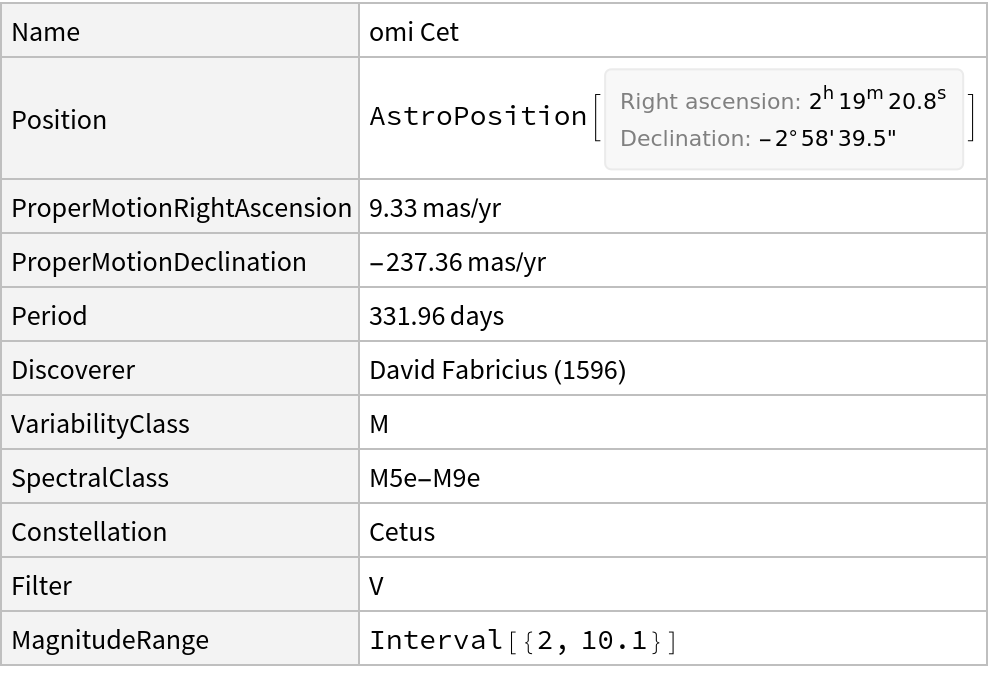 |
Get the magnitude data of Mira, as TemporalData, measured by the observer whose code is DEY during 2023:
| In[5]:= | ![ResourceFunction["AAVSOLightCurveData"][
Entity["Star", "Mira"], <|"ObserversCode" -> "DEY", "DateRange" -> {DateObject[{2023}, "Year"], Now}|>, "TemporalData"]](https://www.wolframcloud.com/obj/resourcesystem/images/b87/b8794080-dabc-45d2-a786-371c221e6621/5bd97ad9de09f36a.png) |
| Out[5]= |  |
One can obtain the list of stars with the variability type RR in the AAVSO database by using the Vizier database, as follows:
| In[6]:= | ![aavsoStars = ResourceFunction["VizierCatalogData"]["B/vsx/vsx", "Filter" -> Select[#Type === "RR" &]]["B/vsx/vsx"]](https://www.wolframcloud.com/obj/resourcesystem/images/b87/b8794080-dabc-45d2-a786-371c221e6621/5c462ee959eb5e24.png) |
| Out[6]= | 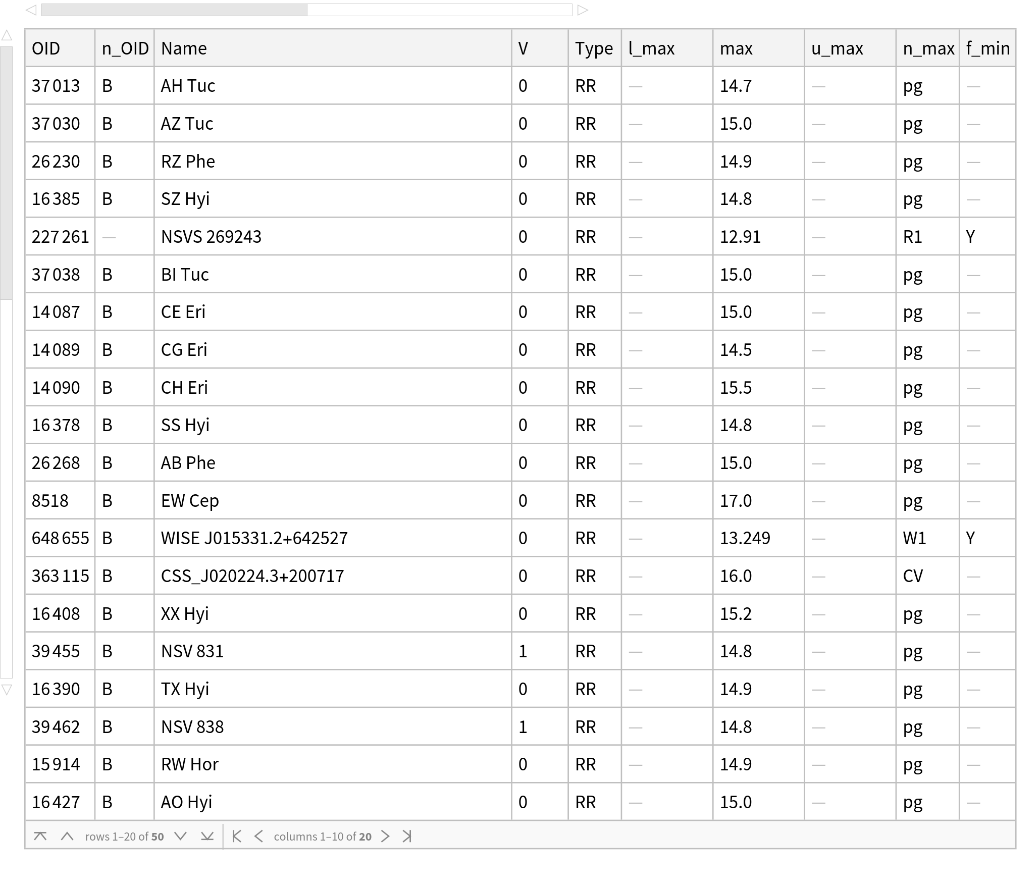 |
Query the object data in the AAVSO database of the first star in this list:
| In[7]:= |
| Out[7]= |  |
Query information about this star in the SIMBAD database:
| In[8]:= |
| Out[8]= | 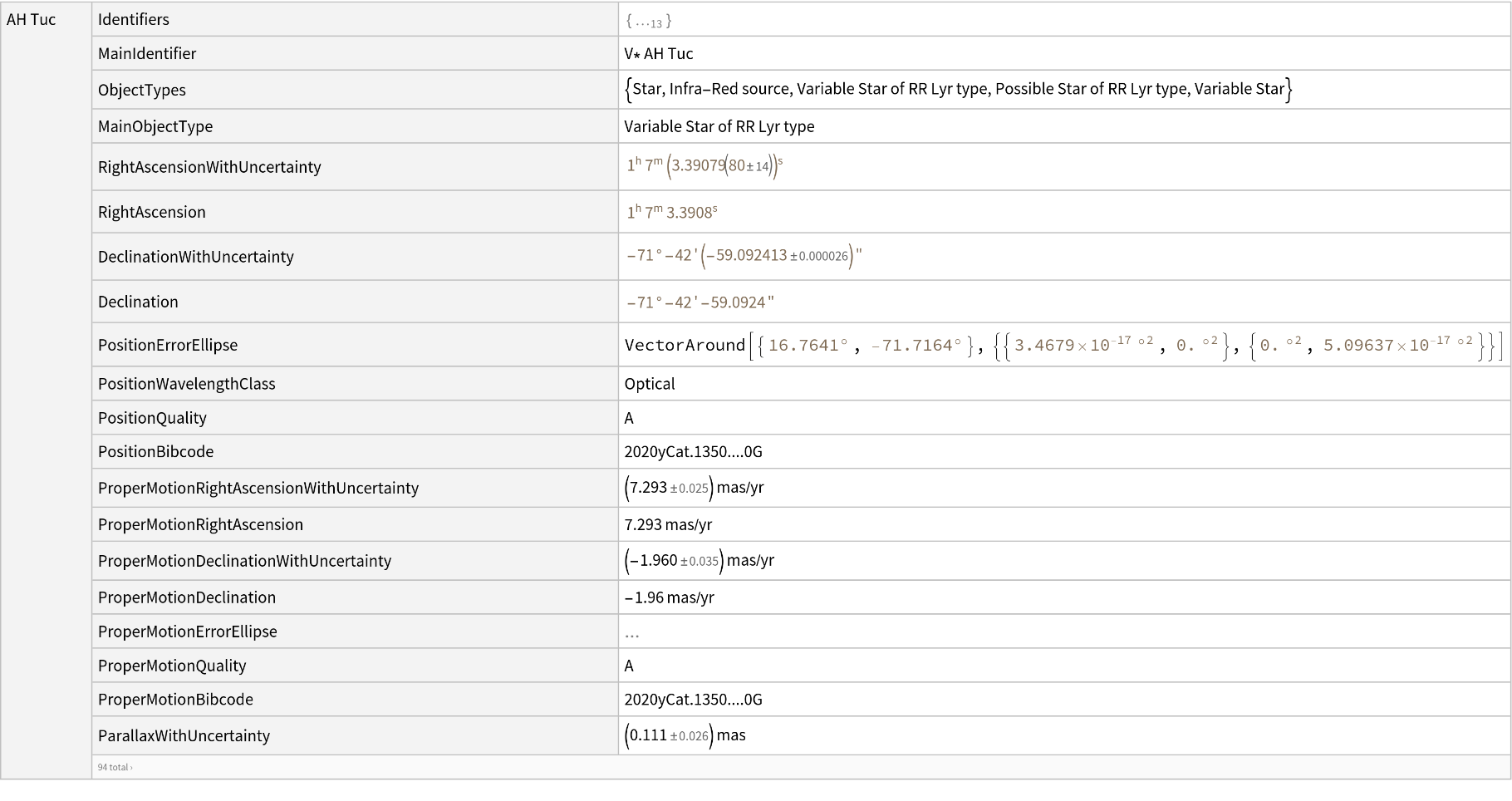 |
Most Wolfram stars are not found in AAVSO International Database:
| In[9]:= |
| Out[9]= |
Get data about the Great Dimming of Betelgeuse in the Johnson V band:
| In[10]:= | ![td = ResourceFunction["AAVSOLightCurveData"][
"Betelgeuse", <|
"DateRange" -> {DateObject[{2019, 7, 1}, "Day"], DateObject[{2020, 7, 1}, "Day"]}, "Filters" -> "V"|>, "TemporalData"]](https://www.wolframcloud.com/obj/resourcesystem/images/b87/b8794080-dabc-45d2-a786-371c221e6621/39babfb243f5820b.png) |
| Out[10]= |  |
Plot the Great Dimming of Betelgeuse:
| In[11]:= |
| Out[11]= | 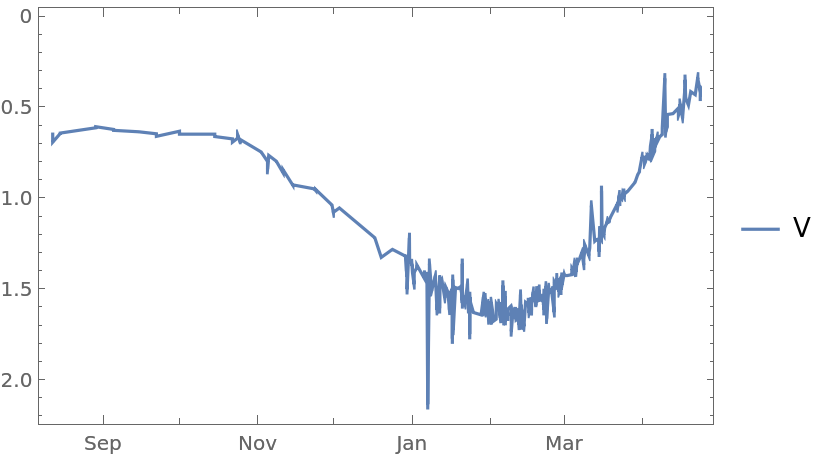 |
This work is licensed under a Creative Commons Attribution 4.0 International License